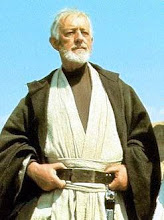The first thought that comes to mind how often the Jesus Christ is mentioned in the Isaiah chapters in 2nd Nephi. There seems to be a little slump there compared to the beginning and the end of the book. However, I want to remind you of Jesus's own commandment to the Nephites (and us) about the writings of Isaiah in 3 Nephi 23:1.
"And now, behold, I say unto you, that ye ought to search these things. Yea, a commandment I give unto you that ye search these things diligently; for
great are the
words of
Isaiah."
This selection in the book of 2nd Nephi is not easy to read at times, but as I skimmed the chapter headings, I found that in 2nd Nephi, Isaiah prophesies a lot about the latter-days, which are our days, and the Millennium. They help us to be righteous and describe the fate of the wicked.
The end of the book of 2nd Nephi (i.e., chapters 25-33) is special, I believe, because of the number of times each member of the Godhead is mentioned, especially in chapters 31-33.
Chapter 31 is where Nephi testifies of the baptism of Christ and the reason He was baptized. He testifies of the need for keeping the commandments and if we do so, we'll obtain eternal life.
I believe chapter 32 is mainly about prayer. How are you doing with your prayers? With prayer we can obtain a knowledge of spiritual (and more) things. We receive our answers through scripture study and the Holy Ghost.
In chapter 33, Nephi testifies that his words are the words of Christ. It reminds me of people that say they've read the Book of Mormon and don't believe it. I'm not sure if they've truly read. I believe Nephi when he says that he (and the other prophets in the Book of Mormon) teach the words of Christ. They are His words.
I love the ending of Nephi's writings, which are also in chapter 33, "
For what I seal on earth, shall be brought against you at the judgement bar; for thus hath the Lord commanded me, and I must obey. Amen." He says that his words will be brought before us at the judgment and that he must obey the commandments of God. So must we and if we do, we will rejoice when the words are brought before us.




